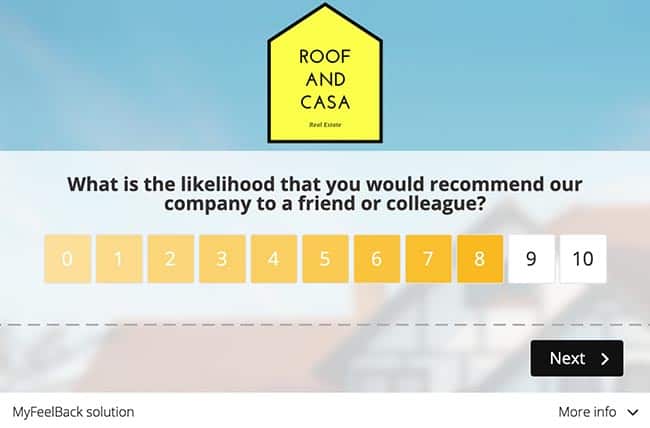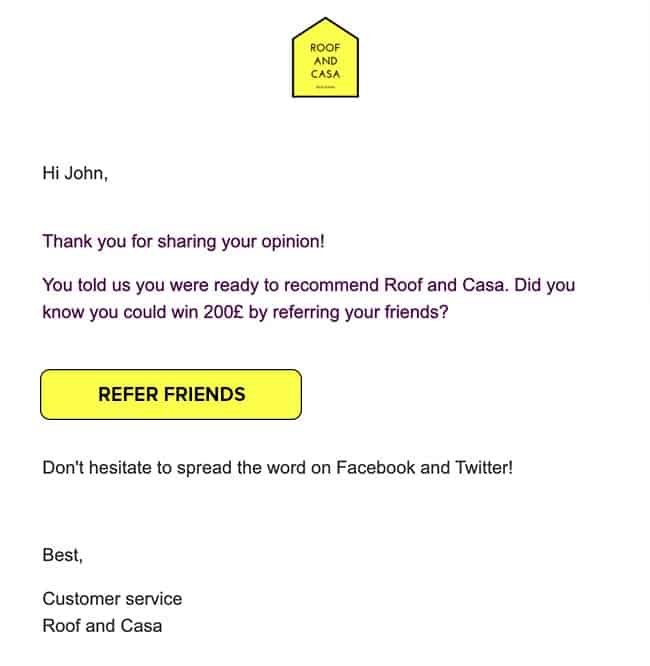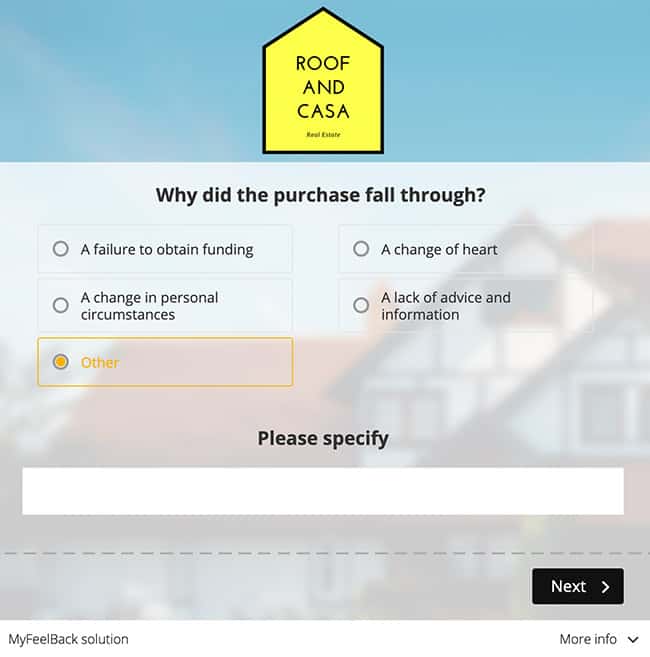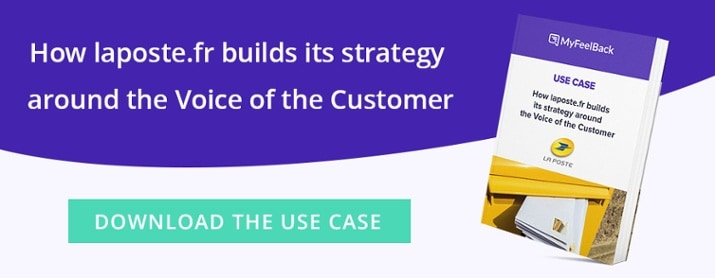For players in the real estate industry, securing sales is a key challenge. If you are a property developer in France, for example, you will know that you must sell 50% of homes to benefit from a performance bond (Garantie Financière d’Achèvement). The pre-marketing stage is therefore decisive. This article presents two surveys to help...
For players in the real estate industry, securing sales is a key challenge. If you are a property developer in France, for example, you will know that you must sell 50% of homes to benefit from a performance bond (Garantie Financière d’Achèvement). The pre-marketing stage is therefore decisive.
This article presents two surveys to help you secure sales, and improve your business performance:
- The first survey to qualify the buyer’s profile and measure the satisfaction of those in the process of buying.
- The second survey to reduce your cancellation rates, by reactivating contacts in a termination phase and identifying any irritants on the buyer’s journey.
The benefits of customer surveys in the real estate industry
Surveys to measure customer satisfaction
A study by French consumer group “Que Choisir ?”, revealed that 48% of buyers are not satisfied with their relationship with the property developer. This is a considerable number. A dissatisfied contact is at high risk of abandoning their relationship with your brand and taking their business elsewhere. According to figures from the French Ministry of Housing, 12% of new housing reservations were cancelled in 2019.
In order to improve your conversion rates, it is important to continually measure satisfaction, immediately, along every step of the buying journey. This can be achieved by deploying customer surveys.
Surveys to identify your buyer profiles and improve your customer knowledge
Customer surveys also serve as “Customer Knowledge” tools. They enable you to better understand your buyers’ motivations, and better identify their profiles and needs. Each property buyer does not have the same motivations. Some are looking to buy a place to live, others to benefit from tax exemption schemes. It is important to adapt your sales pitch to each buyer profile.

The better you know your potential buyers, the more you can personalise the customer relationship and offers. This will help you build a relationship of trust and engage your potential buyers.
Satisfaction and customer knowledge surveys both work towards the same end goal – to provide a quality customer experience and generate business performance. According to the Ministry of Housing once more, a real estate purchase is a source of anxiety for 57% of French people. To reduce this feeling of anxiety (which of course has an impact on sales), you must reassure potential buyers, support them along their journey, and listen to them. The two surveys detailed below aim to do just that.
Implementing these surveys, as an integral part of your Voice of the Customer strategy, will enable you to deploy real actions, bringing added value to your company.
Survey 1: Identifying profiles to adapt customer support and reduce cancellation rate
Each buyer is unique. Each purchase is different. You need to get to know your customers better, in order to adapt your dialogue and communications to each profile. This is the general idea of the first survey you will find below.
The survey goals
More specifically, this survey aims to:
- Measure customer satisfaction and mindset on two levels:
- With regards to your brand.
- With regards to your products (properties) and service.
- Identify the promoter customers, meaning the most enthusiastic, those you could ask to join a referral programme.
- Identify the at-risk customers and adapt the support your provide based on any irritants. This personalised survey will enable you to determine when and why tensions arise.
Sample questions to build your survey
This survey can be deployed on your website. It can be triggered when visitors log into their account, in the form of a pop-in. Below you will find a few sample questions. Of course, you are free to personalise these questions to adapt them to your brand and challenges:
- Question 1. At the beginning of the survey, you can ask an NPS question. If you have never heard of this indicator, we recommend reading our comprehensive guide on the Net Promoter Score. Below is an example of how to phrase the question: “Would you recommend our brand to someone interested in making a similar property purchase?”

- Question 2. You can then ask your respondent to rate different satisfaction items, such as the relationship with their agent, your properties, the costs, or the quality of information provided.
- Question 3. You can also measure your customers’ peace of mind. As mentioned previously, purchasing a property is often a source anxiety. Anxiety is an obstacle to buying. Detecting your potential buyers’ level of anxiety / peace of mind is therefore important.
- Question 4. Finally, you can ask your respondent if they have enough information to make a purchase.
All these questions will help you better qualify your potential buyers, their profile and need for support. We recommend varying your questions based on the answer given to the previous one. So, if the respondent answers A > Redirect to Question 2A. If the respondent answers B > Redirect to Question 2B, etc. With a solution like MyFeelBack, you can include scenarios in your surveys.
Once the survey has been completed, you can trigger an alert, configured beforehand, immediately notifying your customer services that a buyer has responded to a survey. This enables you to:
- Handle at-risk customers as quickly as possible.
- Invite “promoters” to join your referral programme.

A few tips for creating this survey
Finally, here a few good practices when building your survey:
- We recommend defining the different levels of risk beforehand and establishing a plan of action for each one. This will help you determine which actions to take with at-risk customers – call-back from customer services or reassuring / informative marketing content.
- We recommend personalising surveys with the following key variables: name of respondent, name of agent, motivation for property purchase, etc.
- Another good practice consists in re-evaluating at-risk customers’ satisfaction shortly after the first survey, to measure how effective your post-survey actions were.
It is important to solicit potential buyers at the right time by using, for example, analytical parameters such as survey triggers. For example: time spent on a page, first account login, etc. The MyFeelBack solution allows you to use your analytics.
Survey 2: Understanding the reasons leading to cancellation and reactivating customers
Sometimes buyers committed to a business relationship may decide to end their buying journey with your brand. The below survey targets these people. It has two complementary goals.
The survey goals
When a buyer drops out of the journey, there are two things you can do:
- Try to reactivate the buyer if they are still interested in buying, in view of closing the sale.
- Understand the reasons for their abandonment, by pinpointing any irritants; this will reveal areas for improvement in the customer experience.
Termination is an emotional moment. In most cases, when a buyer decides to end the process, they are open to answering any questions you may have. Take advantage of this!
Sample questions to build your survey
As mentioned before, we recommend using scenarios in your surveys. This means adapting your questions to the answer given to the previous question. Here are a few sample questions for this survey:
- Question 1: Why did the purchase fall through? Ask your buyers why they pulled out: a failure to obtain funding? A change of heart? A change in personal circumstances? A lack of advice and information?
- Question 2 : What was the initial, main motivation for your purchase?
- Question 3 : Are you still interested in buying a property?

If the respondent answers yes, then you can ask if they would like a quality manager to get in touch to evaluate the feasibility of the purchase. This allows to renew the contact and maybe change their mind. If the respondent replies affirmatively, then you can ask them for their telephone number and suggest a time. With a solution like MyFeelBack, you can trigger an alert for customer services (by email, for example).
You can also ask your respondents to rate their satisfaction with different items; the properties presented, the relationship with their agent, the quality of documents provided, etc.
A few tips for creating this survey
You need to identify the reasons that can lead a buyer to cancel their reservation ahead of time. This will allow you to create answer options for Question 1. We recommend adding an open field to allow abandoners to express themselves. This will enable you to identify new reasons for termination.
Your surveys should lead to actions. You should define and calibrate them according to the situation. You can, for example, prepare marketing content to share (redirection to FAQ, reassurance emails), or suggest a customer service appointment / callback.
You need to use the right media at the right time. Here is our advice:
Send your survey out the day after the buyer pulls out, to increase your survey response rate.
We suggest deploying your survey via a personalised email, with a subject title acknowledging the termination.
If the buyer is still interested in buying a property, you can try to reactivate the customer by suggesting someone contacts them – a quality manager rather than customer services.
This brings our article to an end. We hope you have found it useful. Feel free to contact us if you have any questions.












